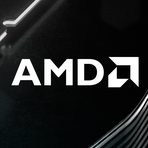Intel's Job Cuts: A Strategic Gamble in a Shifting Landscape
August 1, 2024, 3:55 am
Intel is at a crossroads. The tech giant, once the titan of the semiconductor industry, is now grappling with a storm of challenges. The company plans to cut thousands of jobs, a move that signals both desperation and determination. This strategy aims to streamline operations and fund a comeback.
The semiconductor market is a battlefield. Intel, with its legacy of innovation, has seen its dominance eroded. Rivals like AMD and Nvidia have surged ahead, capturing market share and redefining industry standards. Intel's stock has plummeted nearly 40% this year, a stark reminder of its struggles.
As of December 2023, Intel employed around 124,800 people. This number is down from 131,000 the previous year. The planned layoffs will further shrink this workforce. The company is expected to announce these cuts soon, as it prepares to report its second-quarter earnings.
CEO Pat Gelsinger is in the hot seat. He is pouring resources into research and development, hoping to reignite Intel's innovative spark. Gelsinger's vision includes building new factories to manufacture semiconductors for other companies. This ambitious plan could reshape Intel's future.
But the road ahead is rocky. The demand for traditional chips, which power laptops and desktops, is uneven. The market is shifting. Intel must adapt or risk being left behind. The company’s revenue for 2023 was $54.2 billion, a decline of 14% from the previous year. This downward trend cannot continue if Intel hopes to regain its footing.
Investors are watching closely. Intel's shares rose slightly on news of the job cuts, reflecting cautious optimism. Analysts predict modest growth in the second half of 2024, with total sales expected to increase by 3% to $55.7 billion. This would mark the first annual revenue increase since 2021.
The stakes are high. Intel's future hinges on its ability to innovate and compete. The company is not just fighting for profits; it is fighting for survival. The semiconductor industry is evolving rapidly, driven by advancements in artificial intelligence and other technologies. Intel must pivot quickly to meet these new demands.
Gelsinger's leadership is under scrutiny. He has already made significant changes, including a leadership shakeup in the Intel Foundry. New executives from Micron Technology and Marvell Technologies have been brought in to steer the company’s manufacturing and customer service operations. These moves reflect a desire for fresh perspectives and renewed energy.
However, layoffs are never easy. They come with a human cost. Thousands of employees will face uncertainty. The emotional toll on those affected cannot be overlooked. Yet, in the corporate world, tough decisions are often necessary for survival.
Intel's ambitious plans require funding. The company aims to save up to $10 billion by 2025 through cost reductions. This money will be reinvested into R&D and manufacturing capabilities. The goal is clear: reclaim market share and restore Intel's reputation as a leader in the semiconductor space.
The competition is fierce. Nvidia has made significant strides in developing chips tailored for artificial intelligence. This has put pressure on Intel to innovate quickly. The company must not only catch up but also leapfrog its competitors.
As Intel navigates this tumultuous landscape, it must remain agile. The tech industry is unforgiving. Companies that fail to adapt quickly can find themselves obsolete. Intel's legacy is at stake.
The job cuts are a strategic gamble. They reflect a broader trend in the tech industry, where companies are re-evaluating their workforce in response to changing market conditions. Intel is not alone in this struggle. Many tech giants are facing similar challenges.
In conclusion, Intel stands at a pivotal moment. The planned job cuts are a necessary step in a larger strategy to reclaim its place in the semiconductor industry. The company must balance the need for cost savings with the imperative to innovate. The future is uncertain, but one thing is clear: Intel's journey is far from over. The company must rise to the occasion, adapt to the new landscape, and emerge stronger. The world is watching.
The semiconductor market is a battlefield. Intel, with its legacy of innovation, has seen its dominance eroded. Rivals like AMD and Nvidia have surged ahead, capturing market share and redefining industry standards. Intel's stock has plummeted nearly 40% this year, a stark reminder of its struggles.
As of December 2023, Intel employed around 124,800 people. This number is down from 131,000 the previous year. The planned layoffs will further shrink this workforce. The company is expected to announce these cuts soon, as it prepares to report its second-quarter earnings.
CEO Pat Gelsinger is in the hot seat. He is pouring resources into research and development, hoping to reignite Intel's innovative spark. Gelsinger's vision includes building new factories to manufacture semiconductors for other companies. This ambitious plan could reshape Intel's future.
But the road ahead is rocky. The demand for traditional chips, which power laptops and desktops, is uneven. The market is shifting. Intel must adapt or risk being left behind. The company’s revenue for 2023 was $54.2 billion, a decline of 14% from the previous year. This downward trend cannot continue if Intel hopes to regain its footing.
Investors are watching closely. Intel's shares rose slightly on news of the job cuts, reflecting cautious optimism. Analysts predict modest growth in the second half of 2024, with total sales expected to increase by 3% to $55.7 billion. This would mark the first annual revenue increase since 2021.
The stakes are high. Intel's future hinges on its ability to innovate and compete. The company is not just fighting for profits; it is fighting for survival. The semiconductor industry is evolving rapidly, driven by advancements in artificial intelligence and other technologies. Intel must pivot quickly to meet these new demands.
Gelsinger's leadership is under scrutiny. He has already made significant changes, including a leadership shakeup in the Intel Foundry. New executives from Micron Technology and Marvell Technologies have been brought in to steer the company’s manufacturing and customer service operations. These moves reflect a desire for fresh perspectives and renewed energy.
However, layoffs are never easy. They come with a human cost. Thousands of employees will face uncertainty. The emotional toll on those affected cannot be overlooked. Yet, in the corporate world, tough decisions are often necessary for survival.
Intel's ambitious plans require funding. The company aims to save up to $10 billion by 2025 through cost reductions. This money will be reinvested into R&D and manufacturing capabilities. The goal is clear: reclaim market share and restore Intel's reputation as a leader in the semiconductor space.
The competition is fierce. Nvidia has made significant strides in developing chips tailored for artificial intelligence. This has put pressure on Intel to innovate quickly. The company must not only catch up but also leapfrog its competitors.
As Intel navigates this tumultuous landscape, it must remain agile. The tech industry is unforgiving. Companies that fail to adapt quickly can find themselves obsolete. Intel's legacy is at stake.
The job cuts are a strategic gamble. They reflect a broader trend in the tech industry, where companies are re-evaluating their workforce in response to changing market conditions. Intel is not alone in this struggle. Many tech giants are facing similar challenges.
In conclusion, Intel stands at a pivotal moment. The planned job cuts are a necessary step in a larger strategy to reclaim its place in the semiconductor industry. The company must balance the need for cost savings with the imperative to innovate. The future is uncertain, but one thing is clear: Intel's journey is far from over. The company must rise to the occasion, adapt to the new landscape, and emerge stronger. The world is watching.

